This tutorial requires SQL Server Integration Services 2012 or higher with SQL Server Data Tools installed.
This tutorial demonstrates how to use Devart Salesforce Destination component to load data to Salesforce.
For the purpose of this tutorial, we create a Devart Salesforce Source and an OLE DB Destination.
| 1. | After you have created a new Integration Services project, in the Control Flow tab, drag Data Flow Task from the SSIS Toolbox window and to the design area. The Data Flow Task is created. |
| 2. | Switch to the Data Flow tab, go to the Toolbox docking window, in the Data Flow Sources list select Devart Salesforce Source and drag it to the design area. |
| 3. | From the SSIS Toolbox window drag OLE DB Source and Devart Salesforce Destination. |
| 4. | Connect the two data flow objects with a Data Flow path. |
|
For this example we need two connections - one for the Devart Salesforce Source, the other one for the OLE DB Destination. To create a connection for Salesforce, do the following:
| 1. | Right-click in the Connection Managers pane and select New Connection from the shortcut menu. The Add SSIS Connection Manager dialog box is displayed:
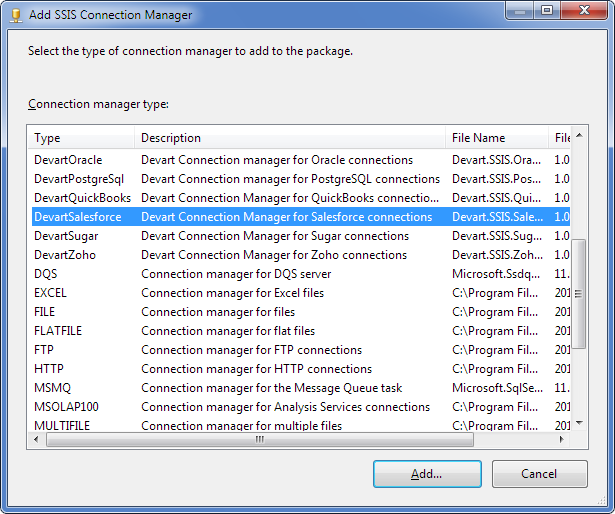 |
| 2. | In the Connection manager type list click DevartSalesforce and click Add. The Devart Salesforce Connection Manager Editor dialog box is displayed. |
| 3. | Specify the User name (email address) and Password, and Security Token you have received when registering at the Salesforce website. If necessary, click Advanced and specify other connection parameters.
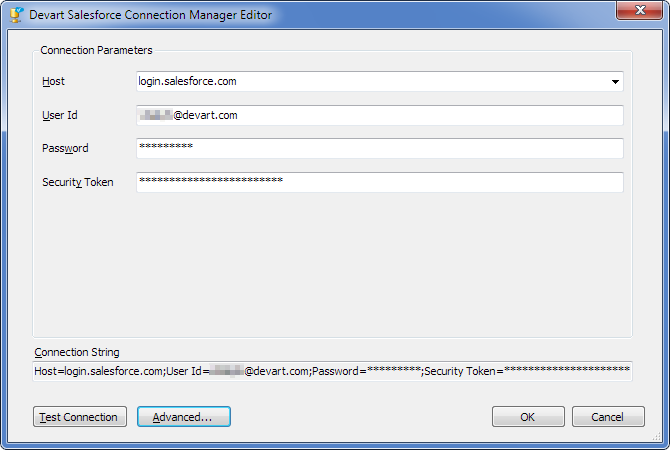 |
The connection for the Salesforce database is now created.
To create a connection for the OLE DB Destination we do the following:
| 1. | Right-click the Connection Managers pane and select New Connection from the shortcut menu. The Add SSIS Connection Manager dialog box is displayed. |
| 2. | In the Connection manager type list select OLEDB and click Add. The Configure OLE DB Connection Manager dialog box is displayed. |
| 3. | Click New. The Connection Manager dialog box is displayed; fill in the connection settings as required, e.g. as follows:
 |
| 5. | The Configure OLE DB Connection Manager dialog box is displayed again, click OK. |
The connection for the OLE DB Source is now created.
|
After the two required connections are created, we can proceed to customizing the data flow components.
| 1. | In the Data Flow design area, double-click the OLE DB Source data flow item. |
| 2. | The Connection Manager tab of the OLE DB Source Editor dialog box is displayed.
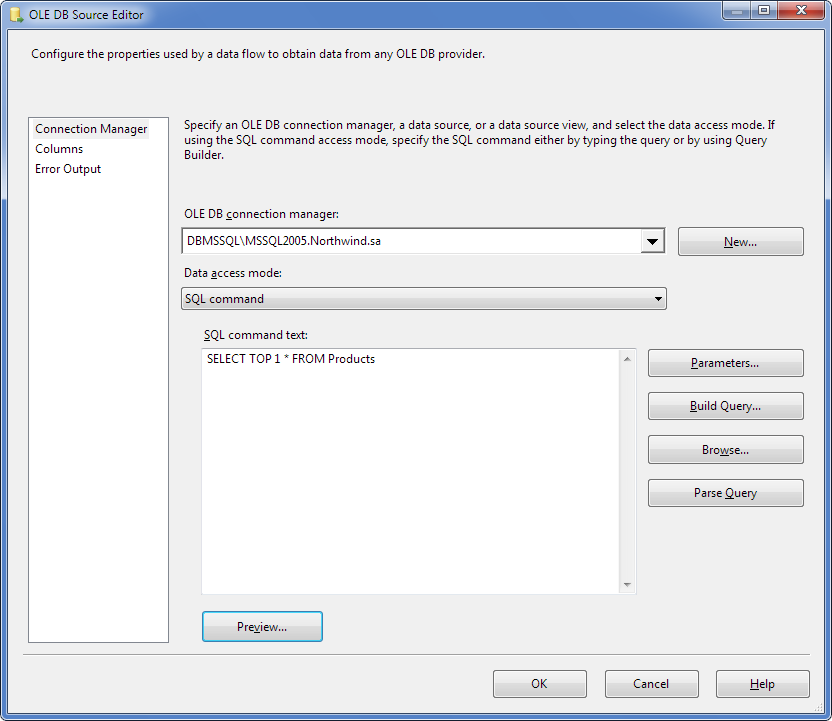
Specify the following settings in this tab: |
| o | Select the required connection in the OLE DB connection manager drop-down list; |
| o | Select the Data access mode, e.g. SQL command; |
| o | Enter the required query in the SQL command text box. |
| 3. | Switch to the Columns tab.
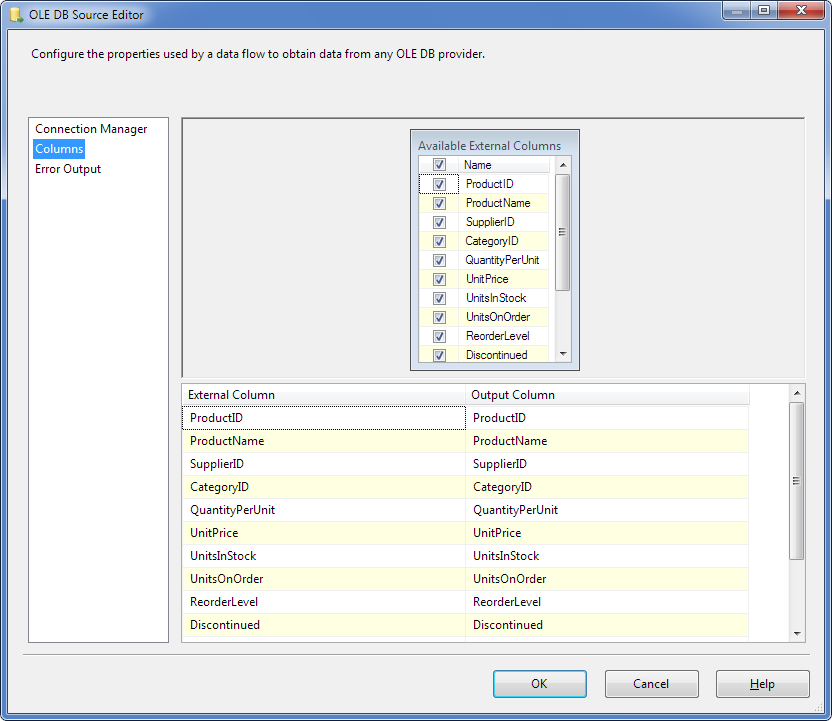 |
| 4. | Configure the properties used by the data flow to obtain data from the OLE DB typer: |
| 5. | Select the required columns in the Available External Columns lists; |
| 6. | Configure Output Column names, if necessary. |
| 7. | Switch to the Error Output tab.
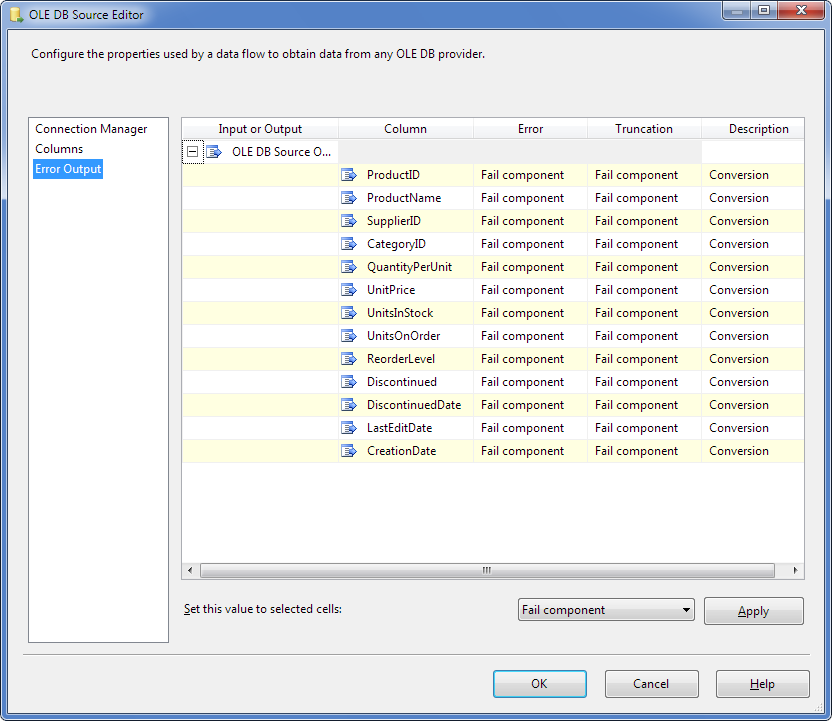
This tab allows you to specify in what way component failure should be treated; the following options are available: Fail component, Redirect row, Ignore failure. After all options are set, click OK. |
If all options are set correctly, the red marker on the data flow object disappears.
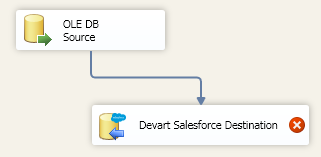
Proceed to customizing the Devart Salesforce Destination data flow object.
| 1. | Double-click the Devart Salesforce Destination in the design area. The Connection Managers tab of the Advanced Editor for Devart Salesforce Destination dialog box is displayed. |
| 2. | Select the Devart Salesforce Connection Manager in the Connection Manager drop-down list and switch to the Component Properties tab.
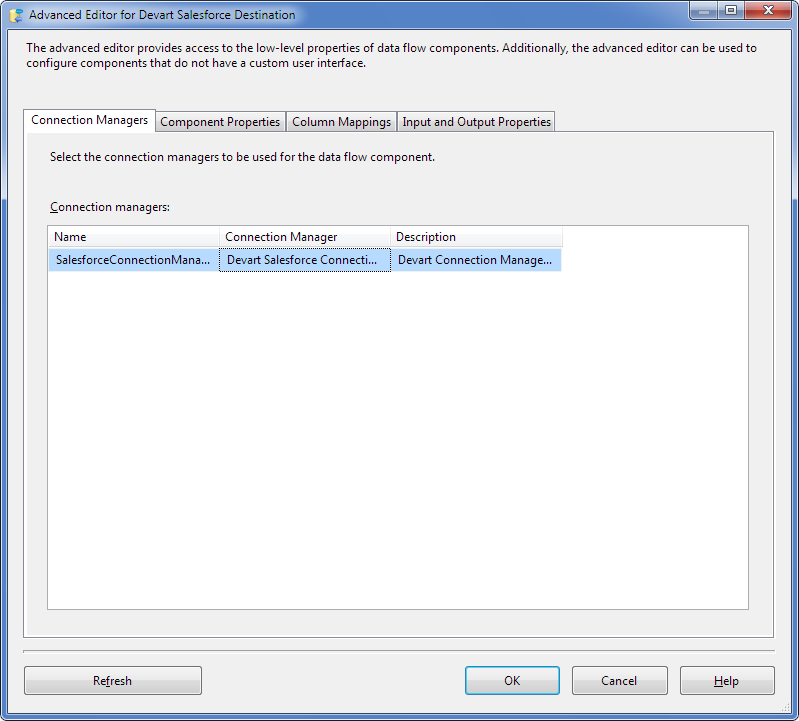 |
| 3. | Here you can customize the data flow component properties. Pay attention to Custom properties. In addition to the Insert operation, Devart Salesforce Destination supports Update, Delete, and Upsert operation. Select the necessary object to insert data to in the ObjectName property, for example, Product2.
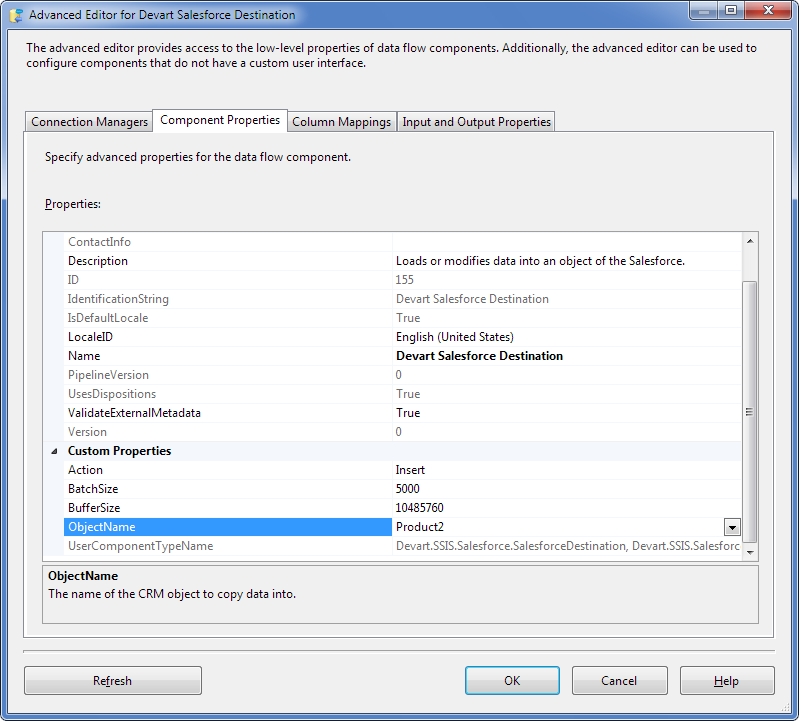 |
| 4. | Switch to the Column Mappings tab. |
| 5. | SSIS automatically maps columns having the same names. If necessary, specify mapping between the source and destination columns either using the Input Columns drop-down lists, or just by drawing lines between the corresponding columns:
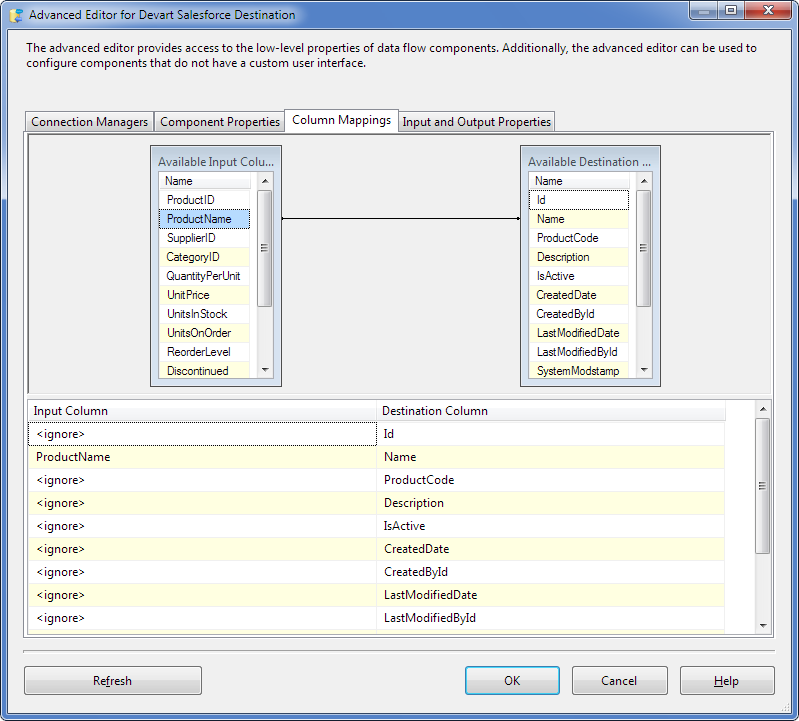 |
| 6. | After mapping is defined, switch to the Input and Output Properties tab.
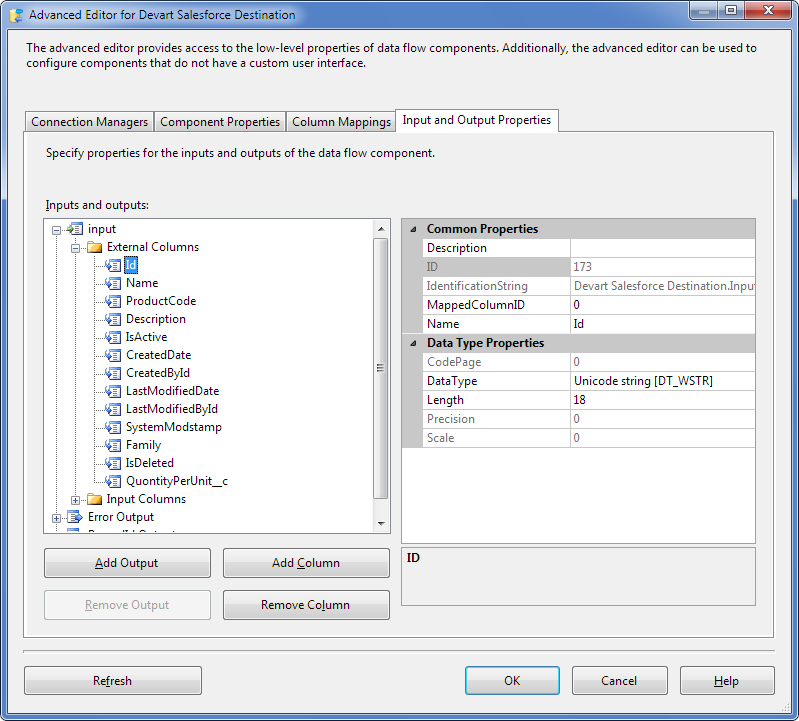 |
| 7. | In this tab you can review input and output properties of the data flow component. Click OK. |
Make sure that the red marker is absent on the Devart Salesforce Destination data flow object.
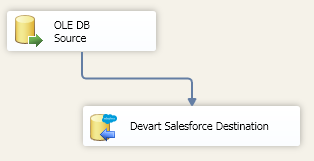
Right-click the design area and then click Execute Task. The green marks on the data flow objects indicate that the data flow process is completed successfully:
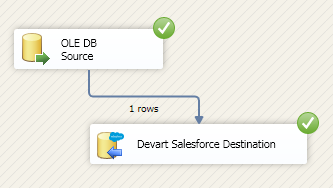
|
|
 Adding DataFlow Components
Adding DataFlow Components Creating Connections
Creating Connections Configuring DataFlow Components
Configuring DataFlow Components











